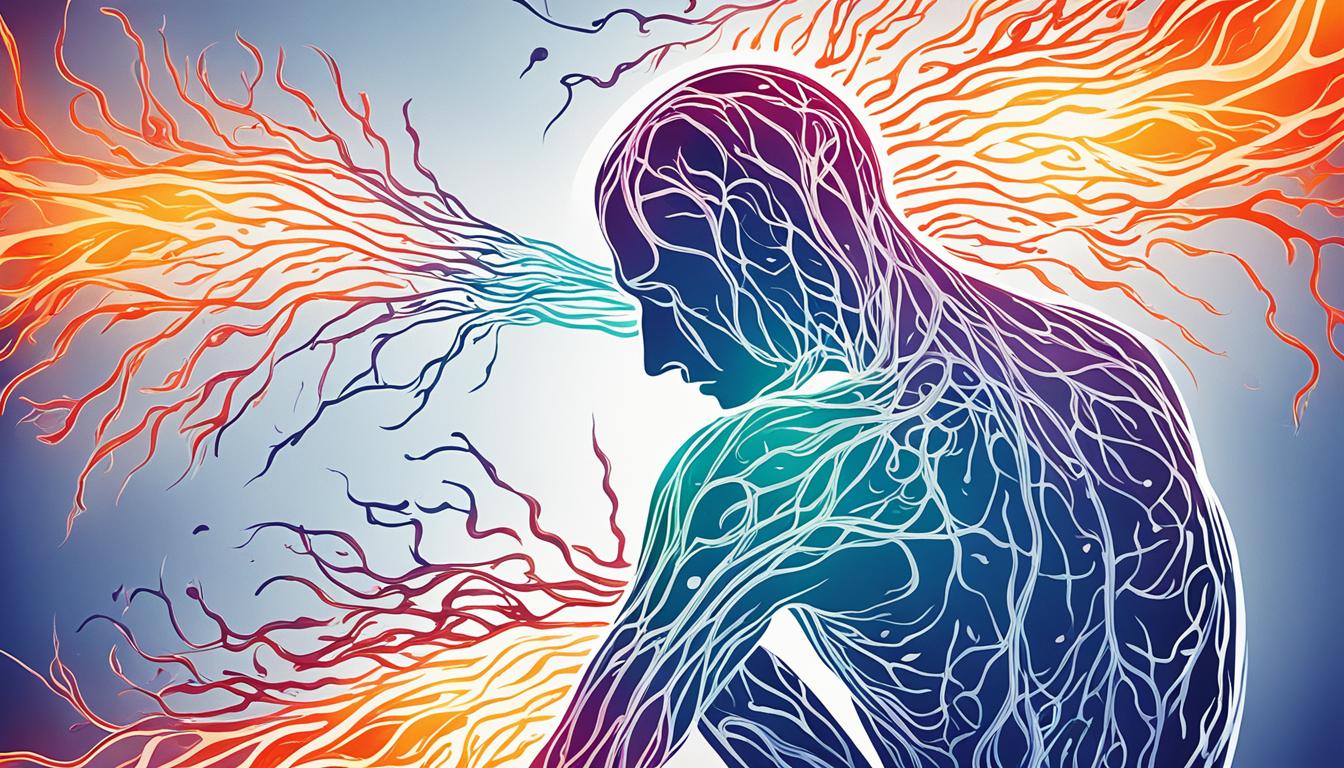CRPS stands for Complex Regional Pain Syndrome. It’s a chronic pain condition that often comes after an injury. This issue causes severe pain, swelling, and skin colors and temperatures to change. It significantly impacts a person’s daily life, so understanding its symptoms, causes, and treatments is crucial.
Diagnosing CRPS is tough because it looks like other illnesses. Doctors use the Budapest criteria, which look for persistent pain and certain unique signs. Imaging tests, like X-rays and MRIs, show changes in bones and soft tissues. Blood tests and skin biopsies also help confirm the diagnosis.
The exact cause of CRPS is still a bit of a mystery. It’s believed to start because the body reacts strangely to an injury. Inflammation seems to be a key player. This is shown by high levels of certain substances in the people affected. Autonomic dysregulation, which affects blood flow and skin temperature, is related to CRPS. Plus, problems with nerves and unusual brain and spinal cord activity add to the CRPS symptoms.
The treatment for CRPS needs a few experts working together. It usually includes medicines like NSAIDs, opioids, and antidepressants. But physical therapy and psychology sessions are also important. A new and hopeful treatment for CRPS is stem cell therapy. This not only helps with pain but also encourages the body to heal better.
Key Takeaways:
- CRPS is a long-lasting pain condition triggered by an injury.
- The main signs of CRPS are lots of pain, swelling, and skin changes.
- Doctors diagnose CRPS by checking for certain types of pain and doing tests.
- CRPS is best handled by a mix of medicine and therapy.
- Stem cell therapy is a new and exciting option for CRPS that may help relieve pain and heal the body.
Diagnosis of CRPS
Diagnosing CRPS can be hard because it has similar symptoms to other issues. Yet, doctors have criteria and methods to help spot CRPS accurately.
The Budapest Criteria
The Budapest Criteria is a key set of rules for diagnosing CRPS. It looks for ongoing pain that’s worse than the initial injury and specific signs in different areas.
[Diagnosis of CRPS, CRPS diagnosis, Diagnostic criteria for CRPS]
| Categories | Signs |
|---|---|
| Sensory | Reports of hyperalgesia (increased sensitivity to painful stimuli) and allodynia (pain from non-painful stimuli) |
| Vasomotor | Temperature or color changes of the skin in the affected area |
| Sudomotor/Edema | Swelling or changes in sweating patterns |
| Motot/Limb | Decreased range of motion or motor dysfunction |
| Trophic changes | Skin texture changes, hair and nail growth abnormalities |
Finding these signs and ruling out others is how a doctor confirms CRPS.
Imaging and Laboratory Tests
Imaging tests like X-rays and MRIs are very important in diagnosing CRPS. They show changes in bones and soft tissue that come with CRPS.
Doctors might do blood tests and take skin samples to help diagnose CRPS. They look for signs of inflammation and check for other diseases.
Coupling diagnostic criteria with tests like imaging and labs is key for a correct CRPS diagnosis. Catching it early is vital for starting the right treatment and staying on top of the condition.
Causes and Pathophysiology of CRPS
The exact cause of CRPS is still unknown. It’s associated with a weird response to injury. The condition involves issues like inflammation, problems with the autonomic nervous system, and nerve damage.
Inflammation in CRPS
Inflammation is key in how CRPS starts and stays. People with CRPS show high levels of certain pro-inflammatory compounds. This points to an immune response to bodily damage. The swelling, pain, and skin changes seen in CRPS are tied to this inflammation.
Autonomic Dysregulation in CRPS
The autonomic nervous system’s problems also play a role in CRPS. This system manages things like blood flow, skin temp, and sweat. CRPS makes these functions off, impacting the pain and symptoms felt by the patient.
Nerve Damage in CRPS
CRPS is linked to nerve damage and irregular activity. The damage from the initial injury can affect nerve function long-term. This leads to increased pain sensitivity, messed up pain processing, and weird sensory feelings. The problem affects both the body’s peripheral and central nervous systems, along with the immune system, causing the lasting pain of CRPS.
We’ve learned a lot about CRPS, but there’s much more to discover. Understanding the full scope of CRPS’s effects is key to making better treatments. These treatments should get to the root of the problem and help those suffering from CRPS.
Conclusion
To manage CRPS (Complex Regional Pain Syndrome), a mix of drugs and other approaches is key. Drugs like NSAIDs, opioids, and antidepressants can lessen pain and swelling. Meanwhile, physical therapy and counseling can boost how well you function and feel.
Thanks to new ways to diagnose and treat CRPS, there’s hope. An example is stem cell therapy. It shows potential in fixing damaged areas and easing CRPS signs, bringing new chances to those affected.
Spotting CRPS early and acting fast are very important. Personalized care that looks at both the physical and mental sides can lead to better results. More research will make managing CRPS even better, helping to improve life for many with the condition.

